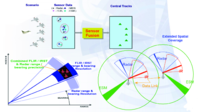
Photo from wikipedia
Currently, soft sensors have been extensively used in complex industrial processes. How to learn effective features from nonlinear process data is the core task of building precise soft sensors. Deep… Click to show full abstract
Currently, soft sensors have been extensively used in complex industrial processes. How to learn effective features from nonlinear process data is the core task of building precise soft sensors. Deep learning, a type of feature extraction approach, has shown unique advantages in many fields, as well as in soft sensor modeling. In this article, a stacked autoencoder (SAE) is introduced for soft sensor modeling. However, most SAE-based methods focus on learning feature representations from raw input data, as well as ignoring the impact of redundant feature information on model performance during the hierarchical pretraining stage. To this end, a novel target-guided related feature learning (TRFL) method is proposed to address the aforementioned two issues. First, an improved gray relational analysis (GRA) method is utilized to evaluate the importance of the input variable for each autoencoder (AE), and a threshold determination mechanism is developed to remove the unrelated features. Later, in the decoding stage of each AE, the target variable and input layer variables are simultaneously reconstructed at the output layer, and a dynamic tradeoff factor is defined to balance the dimension ratio change of the input layer variable with the target variable. In this way, target-related features can be sufficiently extracted by TRFL. Finally, the effectiveness and superiority of the proposed TRFL are validated with a numerical case and the prediction of two key parameters in the blast furnace (BF) ironmaking process.
Journal Title: IEEE Transactions on Instrumentation and Measurement
Year Published: 2022
Link to full text (if available)
Share on Social Media: Sign Up to like & get
recommendations!